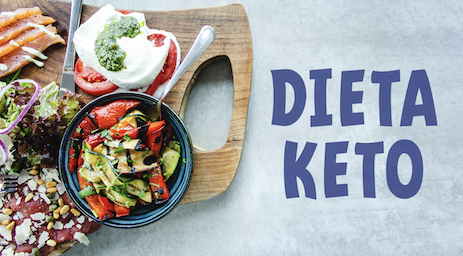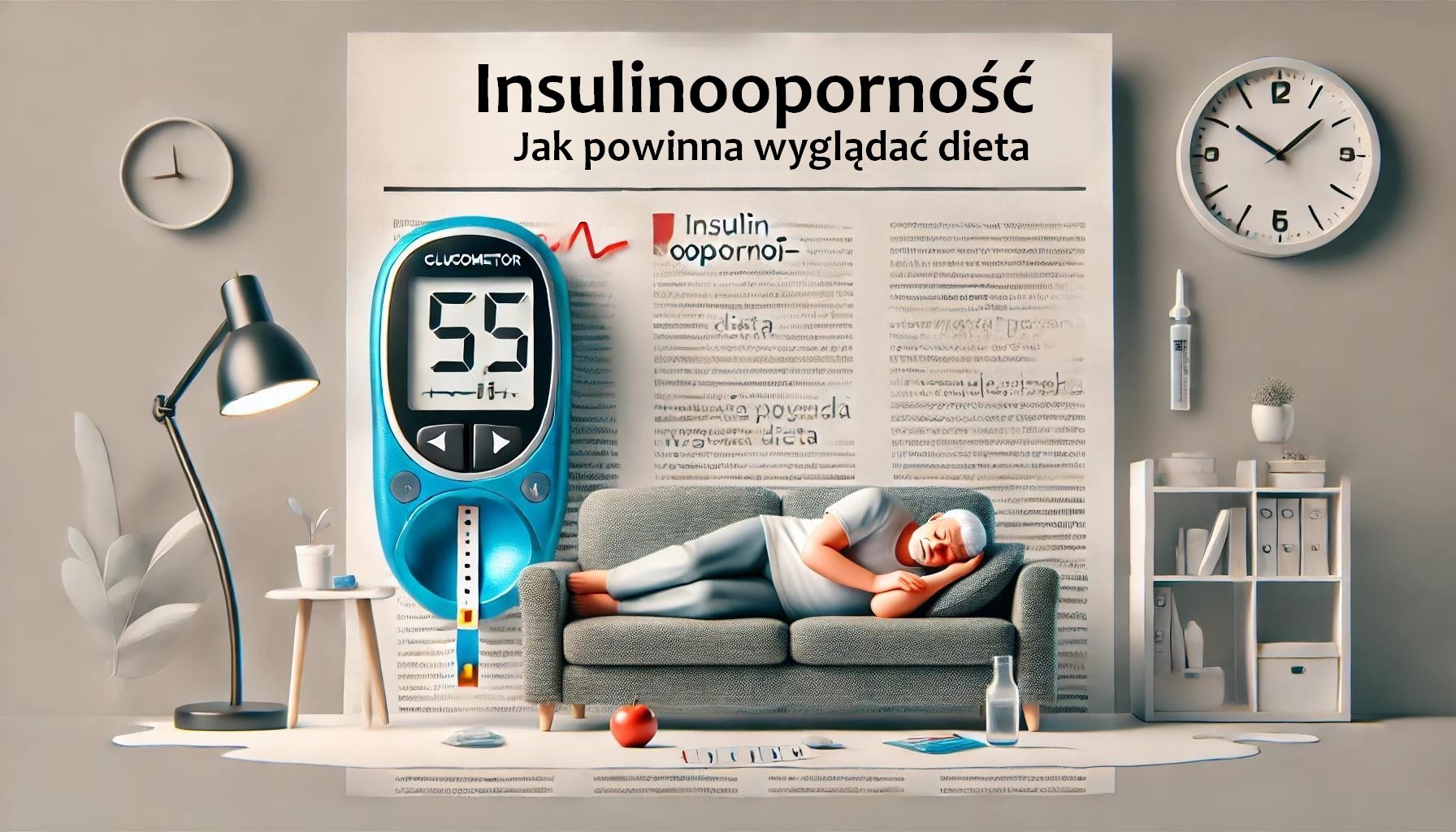Insulin resistance is a condition where the body loses its ability to respond properly to insulin, leading to elevated blood sugar levels. This is a serious health issue that can lead to the development of type 2 diabetes and other metabolic complications. A key element in managing insulin resistance is a proper diet, which can help control blood sugar levels and improve insulin sensitivity. In this article, we will present how a diet for people with insulin resistance should look to support health and minimize the risk of complications.
Key Points
- Insulin resistance is a metabolic condition that can lead to type 2 diabetes and cardiovascular diseases.
- Key causes of insulin resistance include overweight, lack of physical activity, a diet rich in simple sugars and trans fats, stress, and genetic factors.
- Symptoms of insulin resistance can be subtle, such as fatigue, increased appetite, concentration problems, weight gain, and dark patches on the skin.
- Diagnosis of insulin resistance requires laboratory tests, including fasting glucose and insulin measurement, glucose tolerance test, and others.
- A proper diet, rich in complex carbohydrates, fiber, healthy fats, and protein, is crucial in managing insulin resistance.
- Supplementation, including chromium, magnesium, omega-3, and vitamin D, can support the management of insulin resistance.
- Professional consultation with a doctor or dietitian is recommended before making changes to diet and supplementation.
<<<<>>>>
What is insulin resistance
Insulin resistance is a metabolic condition where the body's cells become less sensitive to the action of insulin, the hormone responsible for regulating blood sugar levels. As a result, the pancreas produces more insulin, which can lead to hyperinsulinemia and metabolic disorders. Insulin resistance is often a precursor to type 2 diabetes and can increase the risk of cardiovascular diseases.
Read more about the symptoms, treatment, and diet in insulin resistance

Insulin resistance in layman's terms
Imagine that insulin is a key, and the cells in your body are doors. Normally, the key (insulin) fits the lock (cells) and opens the door, allowing sugar to enter and provide energy. With insulin resistance, the lock becomes rusty and harder to open, so you need more keys (insulin) to open the same doors. If your body cannot produce enough insulin to overcome this resistance, sugar stays in the bloodstream, which can lead to high blood sugar levels and eventually type 2 diabetes.
Insulin resistance is often caused by an unhealthy lifestyle, such as too little physical activity, an unhealthy diet rich in sugars and fats, and overweight. It can often be controlled and improved with changes in diet and lifestyle.
Read more about the keto diet

Causes of insulin resistance
The causes of insulin resistance can be varied and include both genetic and environmental factors. The most common include:
- Overweight and obesity: Especially the accumulation of fat around the abdomen.
- Lack of physical activity: A sedentary lifestyle decreases the sensitivity of cells to insulin.
- Diet rich in simple carbohydrates and trans fats: Consuming large amounts of sugar and processed food.
- Stress: Chronic stress raises levels of stress hormones, which can affect insulin action.
- Genetic factors: Family predispositions to insulin resistance and diabetes.
Symptoms of insulin resistance
The symptoms of insulin resistance can be subtle and are often ignored. The most common symptoms include:
- Fatigue: Constant feeling of tiredness and lack of energy.
- Increased appetite: Especially for sweets and carbohydrates.
- Concentration problems: Attention disorders and difficulty focusing.
- Weight gain: Especially around the abdomen.
- Dark patches on the skin: Especially on the neck, elbows, knees (acanthosis nigricans).
Read more about protein-fat breakfasts

How to check if you have insulin resistance?
Medical Questionnaire
To accurately assess the risk of insulin resistance, I have prepared a special medical questionnaire, which is an integral part of my dietary service. Filling out the questionnaire will allow us to gather the necessary information to assess your health condition and determine the next steps.
Sample questions from the questionnaire:
- Are there any diseases in your family? If yes – please list them:
- Do you have atherosclerosis or high cholesterol levels?
- Do you have skin problems?
- Do you have problems with abnormal body weight? If so, please describe.
- Have there been any problems with overweight or obesity in your family?
- Do you lead a sedentary lifestyle?
- Do you have problems with concentration or memory?
Check out 10 ideas for a dietary lunch

What laboratory tests to perform
Based on the questionnaire results, if we notice an increased risk of insulin resistance, I will recommend appropriate laboratory tests. The doctor may order the following tests:
- Fasting glucose measurement: Blood test measuring glucose levels after at least 8 hours of fasting.
- Oral Glucose Tolerance Test (OGTT): Measurement of glucose levels before and after consuming a glucose solution.
- Fasting insulin measurement: Testing insulin levels after at least 8 hours of fasting.
- HOMA-IR Index: Calculation based on fasting glucose and insulin levels.
- Lipid profile: Measurement of total cholesterol, LDL, HDL, and triglycerides.
- HbA1c (Glycated Hemoglobin): Measurement of average blood glucose levels over the past 2-3 months.
- C-peptide test: Indicator of insulin production by the pancreas.
- Ferritin: Measurement of ferritin levels, indicating iron stores in the body. High ferritin levels can be associated with inflammation and insulin resistance.
- Testosterone: In men and women, low testosterone levels can be associated with insulin resistance. High testosterone levels in women may indicate polycystic ovary syndrome (PCOS), which is often associated with insulin resistance.
- Blood count: General blood test to assess overall health, including red blood cells, white blood cells, and platelets. It can help identify other health issues that may affect insulin resistance.
- Liver function tests (ALT, AST): Elevated liver enzymes can indicate fatty liver disease, often associated with insulin resistance.
- Thyroid function tests (TSH, FT4, FT3): Thyroid dysfunctions, such as hypothyroidism, can affect metabolism and contribute to insulin resistance.
- CRP (C-reactive protein): Indicator of inflammation in the body, which can be elevated in insulin resistance.
Transformations of people with insulin resistance
- Effective fat reduction. Łulasz transformation after many unsuccessful attempts.

- Effective fat burning. Monika's transformation.

Diet for insulin resistance
A proper diet is crucial in managing insulin resistance, as it can help regulate blood sugar levels, improve insulin sensitivity, and control body weight. Below are detailed dietary guidelines that can help manage insulin resistance.
Principles of a healthy diet for insulin resistance
- Avoid simple carbohydrates:
- Consume complex carbohydrates, such as whole-grain bread, brown rice, whole-grain pasta, and groats. Complex carbohydrates have a lower glycemic index and help maintain stable blood sugar levels.
- Limit the intake of simple sugars, such as sweets, soft drinks, fruit juices, and processed foods.
- Increase fiber intake:
- Fiber helps maintain stable blood sugar levels and improves digestion.
- Consume vegetables, fruits, seeds, nuts, and whole-grain products.
- Ensure regular meals:
- Eat 4-5 small meals a day to avoid large fluctuations in blood sugar levels.
- Do not skip meals, especially breakfast.
- Choose healthy fats:
- Healthy fats, such as those found in avocados, olive oil, nuts, and fish, can help improve insulin sensitivity.
- Avoid trans fats and saturated fats, which can worsen insulin resistance.
- Protein in the diet:
- Consume lean protein sources, such as chicken, turkey, fish, tofu, and legumes.
- Protein helps stabilize blood sugar levels and provides a feeling of fullness.
What not to eat with insulin resistance
People with insulin resistance should avoid:
- Simple sugars: Sweets, soft drinks, fruit juices.
- Processed carbohydrates: White bread, pasta, white rice.
- Trans fats: Processed food, fast food, margarines.
- Alcohol: Consuming alcohol can lead to fluctuations in blood sugar levels.
Insulin resistance - sample menu
- Breakfast: Oatmeal with berries, nuts, and natural yogurt.
- Second breakfast: Salad with avocado, tomato, and egg.
- Lunch: Grilled chicken, brown rice, and steamed vegetables.
- Afternoon snack: Smoothie with green vegetables and fruits.
- Dinner: Baked salmon with quinoa and broccoli.
Supplementation in insulin resistance
Supplementation can support the management of insulin resistance. The most commonly recommended supplements include:
- Chromium: Helps regulate blood sugar levels.
- Magnesium: Supports the proper functioning of the nervous and muscular systems.
- Omega-3: Reduces inflammation and improves insulin sensitivity.
- Vitamin D: Supports bone health and the functioning of the immune system.
Consultations
It is recommended to consult a doctor or dietitian before making any changes to diet or supplementation. Professional advice can help tailor the plan to individual needs and ensure the best results in managing insulin resistance.
If you are interested in a detailed analysis of your test results and want to get a personalized nutrition plan, I invite you to collaborate. After purchasing my dietary service, you will get access to a medical questionnaire that will help us accurately assess your needs and develop an effective plan for managing insulin resistance. Take advantage of professional dietary advice and take care of your health today!
<<<<>>>>
Summary
Insulin resistance is a serious metabolic condition that can lead to many severe conditions, such as type 2 diabetes and cardiovascular diseases. A key role in managing insulin resistance is played by a proper diet and lifestyle. By changing eating habits, regular physical activity, and appropriate supplementation, it is possible to significantly improve insulin sensitivity and control blood sugar levels. It is worth consulting a doctor or dietitian to adjust the action plan to individual needs and ensure the best health outcomes.
Bibliography
- Alberti, K. G. M. M., & Zimmet, P. Z. (1998). Definition, diagnosis and classification of diabetes mellitus and its complications. Part 1: diagnosis and classification of diabetes mellitus provisional report of a WHO consultation. Diabetic medicine, 15(7), 539-553.
- Reaven, G. M. (1988). Banting lecture 1988. Role of insulin resistance in human disease. Diabetes, 37(12), 1595-1607.
- DeFronzo, R. A., Tobin, J. D., & Andres, R. (1979). Glucose clamp technique: a method for quantifying insulin secretion and resistance. American Journal of Physiology-Endocrinology and Metabolism, 237(3), E214.
- Muoio, D. M., & Newgard, C. B. (2008). Mechanisms of disease and metabolic mechanisms of insulin resistance and β-cell failure in type 2 diabetes. Nature Reviews Molecular Cell Biology, 9(3), 193-205.
- Ferrannini, E., & Mari, A. (1998). How to measure insulin sensitivity. Journal of hypertension, 16(7), 895-906.
- Matthews, D. R., Hosker, J. P., Rudenski, A. S., Naylor, B. A., Treacher, D. F., & Turner, R. C. (1985). Homeostasis model assessment: insulin resistance and β-cell function from fasting plasma glucose and insulin concentrations in man. Diabetologia, 28(7), 412-419.

